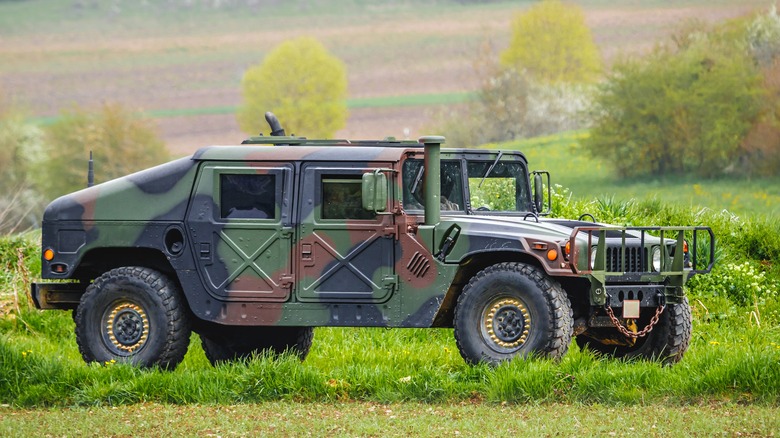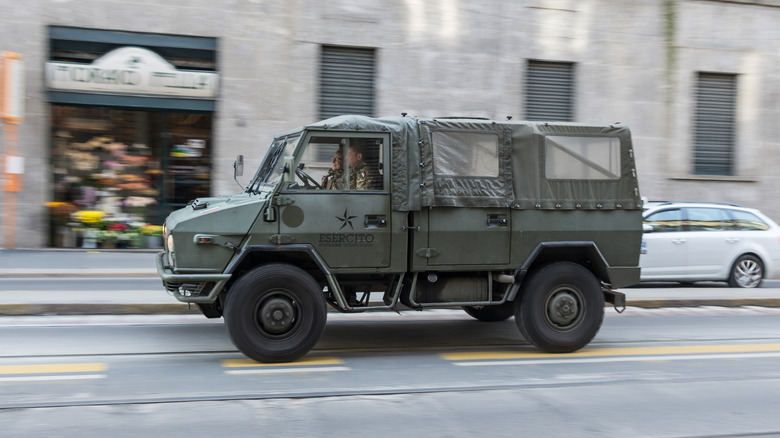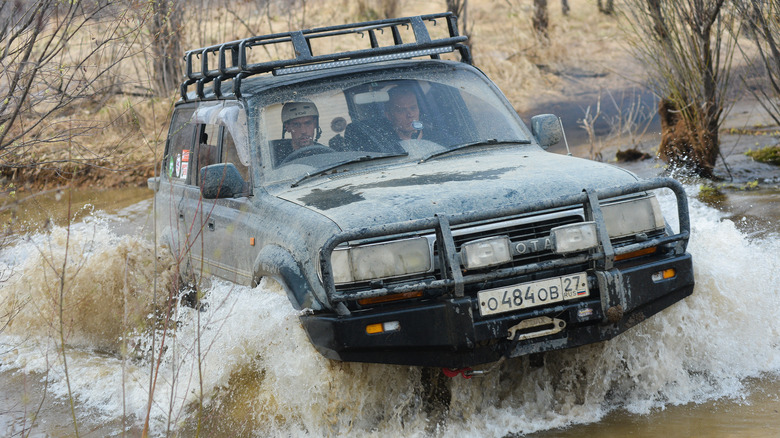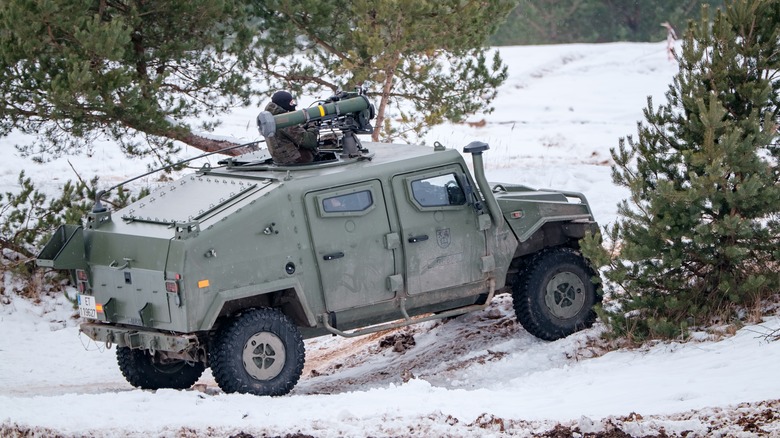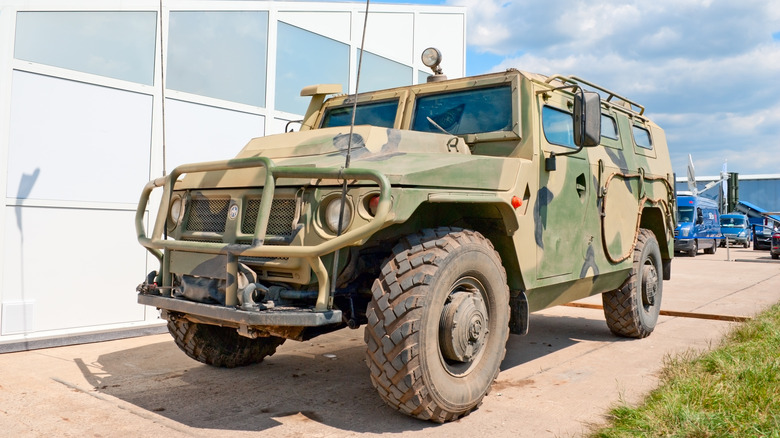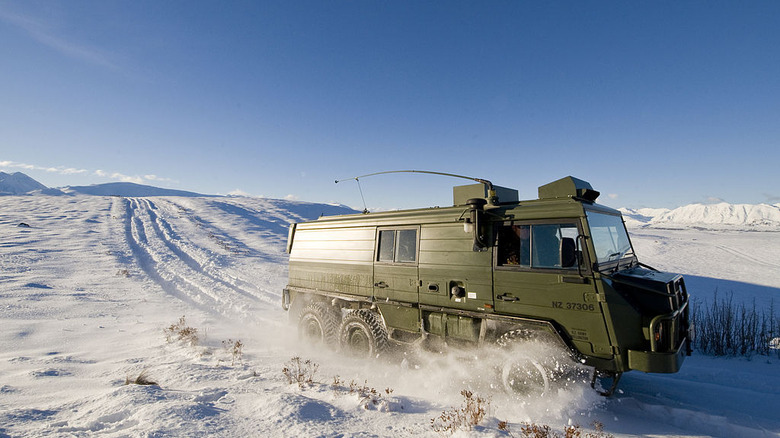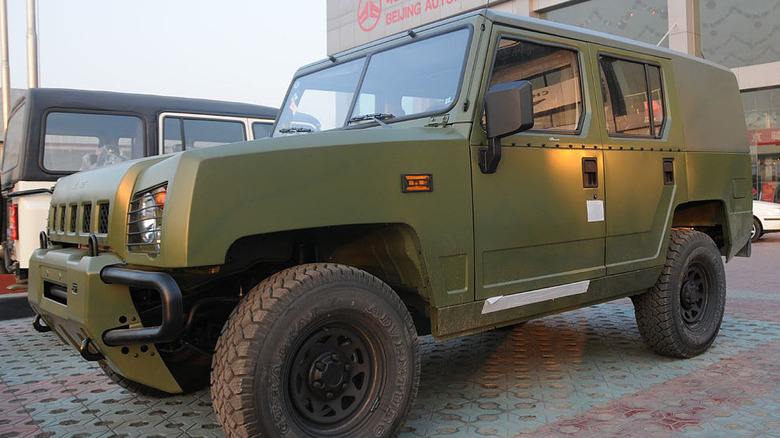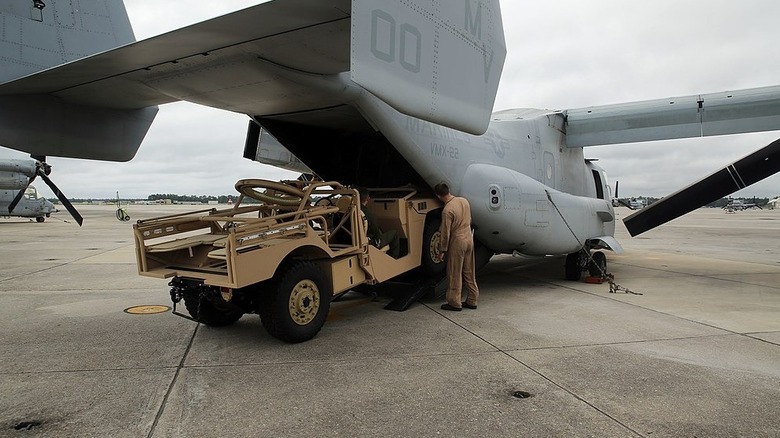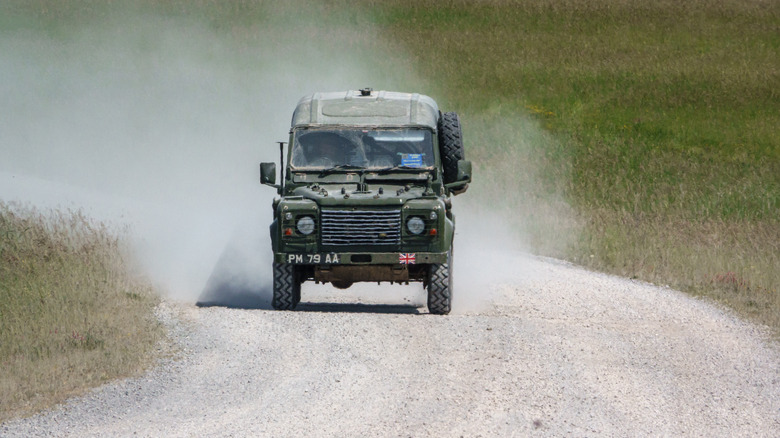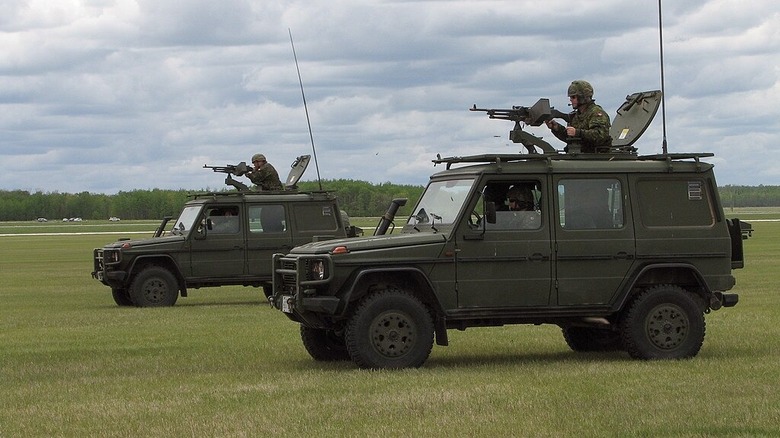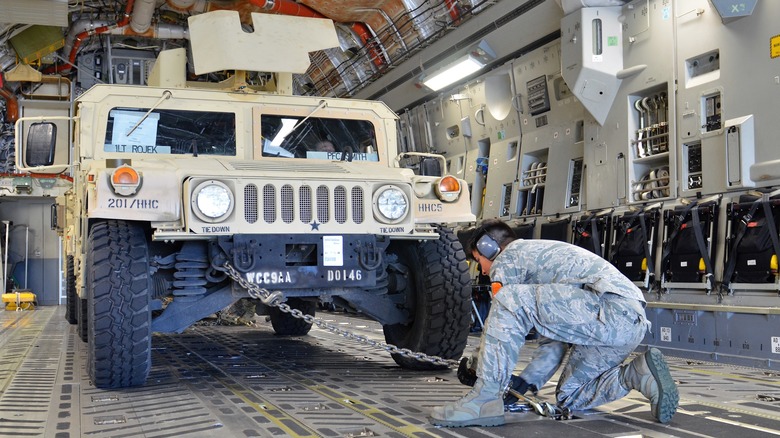10 Best Military Light Utility Vehicles In The World In 2023
Before Arnold Schwarzenegger and Sylvester Stallone were seen cruising around town in their respective Humvee and Mercedes-Benz G-Class, these all-terrain people carriers played a far more important role on the world's stage as essential articles of military machinery. Ever since horses were phased out and armies were mechanized, the Military Light Utility Vehicle (or LUV) has been integral to infantry utility service, with vehicles such as the Willys Jeep, Land Rover, Humvee, and G-Wagon proving invaluable for a variety of applications. These include transporting goods and personnel, carrying mounted weapons, medical evacuations, reconnaissance, and many other purposes.
LUVs are the lightest weight class of any military vehicle. They vary from commercially-available vehicles repurposed for military use, such as the ubiquitous Toyota Land Cruiser, to purpose-built machines, such as the bespoke Boeing Phantom Badger. While most Military Light Utility Vehicles are markedly different from one another, they all share some common characteristics. For example, they are usually all-wheel drive, have all-terrain capabilities, sparse armor, and the capacity to carry at least four people.
During World War 2, the 4x4 Willys Jeep was the first vehicle created for the Army's new class of light vehicles weighing less than a ton, and the German equivalent was Volkswagen's Kübelwagen. Successive militaries utilized various forms of LUV ever since, and they are now considered a fundamental part of any mechanized fighting force. The following are the best Military Light Utility Vehicles that are currently in operation worldwide.
IVECO VM 90
Most European road users will be familiar with the Italian truck manufacturer IVECO. The company name is an acronym for Industrial Vehicles Corporation and it has been producing high-quality trucks and buses since 1975.
Based on the IVECO Daily truck, the Italian IVECO VM 90 is an adaptable 4x4 that has seen action in many conflicts, most recently in Ukraine. True to its trucking roots, the VM 90 is bulky, with a height of over 9 feet, a length of over 20 feet, and a width of 6.6 feet. This lends itself to impressive versatility, as you can pack a lot of potential into such a sizable frame.
As such, there are four main variants of the VM 90 currently in use. There is the base model, the Ambulanza battlefield ambulance, the Protetto armor-plated option for combat use, and the Torpedo tactical unit with a tarp at the rear. This rear open section can mount a 12.7-millimeter heavy machine gun or a 7.62-millimeter light machine gun turret or install other add-ons, such as a field clinic box for medical applications.
The IVECO VM 90 is a somewhat basic yet highly versatile Military Light Utility Vehicle that fulfills roles as a general utility vehicle on the battlefield, a reconnaissance vehicle due to its lightweight design, and an armored car with off-road proficiency. The Italians have a saying: La semplicità è l'ultima sofisticazione, or "simplicity is the ultimate sophistication." This certainly applies to the workhorse VM 90.
Toyota Land Cruiser
Few brands have such a reputation for reliability as Toyota. It is, therefore, no surprise that the Toyota Land Cruiser became perhaps the most commonly-used non-purpose-built Military Light Utility Vehicle and the choice of irregular armies in South and Central America, Africa, and Asia.
The Land Cruiser has been manufactured as a four-wheel-drive commercial vehicle since 1953. More recently, it has become a staple vehicle for paramilitary organizations and militant groups for use in transporting personnel, supplies, and weapons. While it is available in many variants, the Toyota Land Cruiser 70 series is the one most popularly used as a LUV, in particular, the two-door pickup model, which could accommodate passengers in the cab and at the rear, where a heavy machine gun could also be mounted on a tripod. Dedicated troop carriers were also created with fully-enclosed cabins as well as armor-plated versions, among other special-purpose options.
Not only was the Land Cruiser reliable, but parts were readily available in all corners of the world, making this a highly practical and cost-effective solution, especially in poorer nations. Such was its ubiquity during the 1980s conflict between Chad and Libya that it was commonly referred to as the Toyota War. While this could only have been bad publicity for the Japanese marque, the Land Cruiser remains a popular seller even today.
URO VAMTAC S3
They say that imitation is the sincerest form of flattery, but even the Spanish would have to admit that they borrowed more than a little from the design of the Humvee in creating their flagship Military Light Utility Vehicle, the URO VAMTAC S3. To the casual onlooker, it is almost indistinguishable from its U.S. counterpart, with its narrow, perpendicular windshield, wide, boxy hood, flush wheel arches, and pitched rear roof panel.
The VAMTAC acronym translates as "high mobility tactical vehicle," and it does exactly what it says on the carton. It is indeed highly mobile and available in several variants to suit multiple applications. This is a one-size-fits-all solution, and such is its usefulness that it has been exported to several countries in Europe, North Africa, and Central America.
Its variants include both pickup and enclosed versions and a command version, which houses a cargo compartment. Many are fitted with anti-ballistic armor plating, and they can carry many different armaments, including rocket launchers, grenade launchers, mortars, and heavy machine guns. It can tow loads of up to 1,500 kilograms and can be transported via Chinook helicopter and dropped by parachute even at low altitudes, adding to its flexibility.
While it will always draw comparisons to the Humvee, the URO VAMTAC S3 is nonetheless a worthy competitor and one that has proved its value to its native Spanish Army and elsewhere in the world.
GAZ Tigr
Like the Spanish with the URO VAMTAC S3, the Russian military was more than a little inspired by the Humvee when creating the GAZ Tigr, both in concept and aesthetics. Sure, it may not be as boxy at the business end, and its side panels may be slightly tapered, but nobody is fooled here. It is nonetheless a valuable and versatile machine that is still in service and just as useful as its counterparts in real-world applications.
The Gaz Tigr has excellent mobility, assisted by an independent torsion-bar suspension and driver-adjustable tire pressure, which help it navigate rugged terrain — including demanding sand dunes. It is effective in temperatures up to 122 Fahrenheit and can ford water to a depth of 1.2 meters, making this a competent LUV. These qualities have proved popular with overseas markets, and Tigrs have been shipped to China and the Middle East.
The GAZ Tigr is built using body armor and bulletproof windows to protect its occupants and features a modular design that makes it like the Swiss Army Knife of Military Light Utility Vehicles. It can be converted into a passenger vehicle for nine persons, an armored personnel carrier, or a cargo truck, and it can be fitted with a range of armaments, including roof-mounted grenade launchers or heavy machine guns. The GAZ Tigr might be something of an imposter in the world of LUVs, but this is as formidable a machine as ever challenged the Humvee crown.
Pinzgauer II
The original Pinzgauer was a legendary Austrian LUV that enjoyed almost four decades of service. However, it was a little long in the tooth towards the end of its tenure, and a worthy replacement was sought after it was discontinued in 2008 due to a lack of sales. The new generation, imaginatively named the Pinzgauer II, would be bigger, have a greater capacity, better mobility, a larger payload, and all-around better performance.
The most notable difference with the Pinzgauer II is its six-wheel, 6x6 configuration, as compared to the original's four. This means it can carry larger weights with relative ease, especially given its considerable engine power increase from 87 to 194 horsepower. With a 3.8-ton cargo capacity, the Pinzgauer II can accommodate 14 troops plus equipment and is capable of towing trailers or artillery as required. It has its cab perched high above the chassis, making it able to ford waters to a depth of 1.5 meters, and it has a range of 1,000 kilometers, which can be doubled with an additional fuel tank, making this one of the most versatile LUVs in this list.
While the Pinzgauer II is one of the larger Military Light Utility Vehicles, it is still transportable in a Hercules aircraft or Chinook directly to combat zones, where it can carry out ambulance, reconnaissance, tactical, and communications duties. It can be configured with heavy armor, but the Pinzgauer II is not designed to carry defensive armaments and plays a more utilitarian role. Still, as far as performance, practicality, and awesome looks are concerned, this LUV does quite well.
[Featured image by New Zealand Defence Force from Wellington, New Zealand via Wikimedia Commons | Cropped and scaled | CC BY 2.0]
Beijing BJ2022
If the GAZ Tigr and URO VAMTAC S3 are Humvee lookalikes, then there are more than a few similarities between the Beijing BJ2022 and the Jeep Cherokee on which it is primarily based. Dramatically dubbed the Brave Warrior, the BJ2022 is a Military Light Utility Vehicle developed for the People's Liberation Army of China. While its concept was revealed in 2002 as a collaboration between Beijing Automobile Works and Chrysler, it took a few years to come to fruition, with Chrysler dropping out of the project, and it has been in use since 2007, with operators that include the armies of Syria, the Dominican Republic, and the Philippines.
The Beijing BJ2022 is manufactured in large numbers and is available in many iterations, including two-door, four-door, and two-door pickup configurations. It is available as a hard top or soft top, where its height can be reduced to its hood level thanks to a folding windshield and detachable canvas roof. It can carry between five and eight personnel, with maximum payloads of between 500 and 750 kilograms, depending on the model.
In a smart move, the Chinese army opted for a Nissan powertrain for the BJ2022. It is available in turbo diesel and regular gasoline options, with various capacities ranging from two to three liters, making this a versatile, practical Military Light Utility Vehicle that forms an essential part of the backbone of the Chinese fighting force.
[Featured image by KongFu Wang from Beijing, China via Wikimedia Commons | Cropped and scaled | CC BY-SA 2.0]
Boeing Phantom Badger
While it may sound like a Marvel superhero pitch that never made it out of the boardroom, the Phantom Badger is an extraordinary Military Light Utility Vehicle that deserves to be taken seriously. It was requested by U.S. special operations forces as they required a LUV that could tackle the most demanding terrain, and Boeing met the challenge with this formidable machine.
The Phantom Badger Combat Support Vehicle was introduced in 2013. It has been in production ever since as a highly modifiable, modular LUV that is useful for a number of military applications, including medical evacuation, bomb disposal, search and rescue, cargo transport, and much more. It has an advanced suspension that can tackle the most rugged of battlefield terrains, can be transported to combat zones via the V-22 Osprey aircraft or Chinook helicopter, carries up to five troops, and has multiple accessories, including powered winches and hydraulic pumps. Lest we forget, it is also armed to the teeth, with dual 7.62-millimeter machine gun turrets to the rear and the capacity to fit a heavy machine gun or grenade launcher, as required.
Just as the Phantom Badger is very practical in terms of its off-road capabilities, armaments, attributes, and transformer-style modular design, it also excels in terms of performance. For example, it has a range of 450 miles, produces 420 pound-feet of torque, consumes fuel at a rate of 21 miles per gallon, and can even hit 80 miles per hour on a level surface. So yes, it has a silly name, but the Phantom Badger is one impressive piece of kit.
[Featured image by Lance Cpl. Michelle Reif via Wikimedia Commons | Cropped and scaled | Public domain]
Land Rover Wolf
After the success of the Willys Jeep in World War II, the British created the Land Rover. It is one of the most recognized LUVs in the world, having been used in many military operations since 1948, and is also a popular commercial vehicle used by farmers, country-dwellers, festival organizers, coastguards, lifeguards, and fire services, to name a few. Even Queen Elizabeth the Second was a proud owner and regularly drove them on her various country estates.
In military service, the role of the Land Rover is largely utilitarian, and the Wolf series is a customized design that is based on the tried-and-tested Defender model, with structural modifications including a strengthened chassis, roll cage, and multiple weapons mounts for light and heavy machine guns, and missile and grenade launchers. It is available in 23 variations in both short-wheelbase and long-wheelbase configurations and has many optional accessories for various purposes, including snorkels, blackout curtains, spotlights, and winches.
One common feature of all Land Rovers is their aluminum construction, which serves the dual purpose of keeping them lightweight while resisting corrosion. This frame helps them endure harsh conditions, from the Arctic tundra to the deserts of the Middle East.
However, this World War II-era 4x4 is starting to look dated among modern light utility vehicles, and since Land Rover has recently been sold to the Indian Tata company, it is looking like the old faithful LUV's days are numbered — at least as far as military service is concerned.
Mercedes-Benz G-Class
The G-Wagon, as it's commonly known, has been around since the late 1970s and is a vehicle of choice for musicians and movie stars worldwide. Still in production today, it is licensed for commercial use in over 60 countries, and its military incarnation is in service in more than 35. While the G Class doesn't look particularly special with its boxy proportions and rugged design, this is perhaps the ultimate wolf in sheep's clothing and a great example of German quality.
The G-Class series has a lot of variety, including hard-top and open-top options, different wheelbases, a pickup version, and even a six-wheeler. It can carry a payload of up to 1.5 metric tons and is available in heavy and light armor variations, with either gasoline or diesel engines and with manual or automatic gearboxes. There really is a G-Wagon to suit everyone, whether you are a Special Ops veteran or a Tik-Tok influencer.
As with most things Mercedes, the G-Wagon's specifications are impressive. The common 2.9-liter diesel variant can scale gradients of 70 percent, drive off a vertical step of 0.5 meters, and ford a water crossing to a depth of 0.6 meters. Its range is a whopping 373 miles, although its power is a conservative 156 horsepower, with a top speed of around 75 miles per hour. So, while the base-level Mercedes G-Class won't be winning any races on the asphalt, in terms of its off-road ability, practicality, and adaptability, this is an excellent all-rounder with many real-world uses in conflict zones.
[Featured image by Tyler Brenot via Wikimedia Commons | Cropped and scaled | CC BY-SA 3.0]
HMMWV
The HMMWV, or High Mobility Multipurpose Wheeled Vehicle, commonly known as the Humvee, needs no introduction. These light utility vehicles are most frequently used by the U.S. military and are known for their reliability, survivability, and ease of maintenance. This is the automobile that springs to mind when we think of the modern Military Light Utility Vehicle, and it is ingrained in popular culture.
The Humvee is available in 15 configurations, but they all share the same basic mechanical features such as engine, transmission, and chassis, making it easier for any army mechanic to work on each, whether they're back at base or in the middle of a war zone. Above the chassis, they are interchangeable and able to carry a wide variety of armaments, cargo, and personnel, depending on their setup. As with the G-Class, they are all full-time four-wheel-drive and able to conquer demanding terrain, including slopes of up to a 60 percent gradient, while being able to ford water bodies up to 1.5 meters in depth. Also, like the Mercedes, its top speed is relatively unimpressive at 70 miles per hour, but it will get you home and, in most cases, get you home safely.
Like the Land Rover, the Hummer has weight-saving aluminum body panels, but there is a heavier armored variant. It is fitted with a 6.2-liter V8 engine (6.5 for the turbocharged option) and can carry a payload of up to 5,000 pounds, depending on the configuration.
In short, the HMMWV is more than fit-for-purpose, as a world-leading, tried-and-true, multipurpose Military Light Utility Vehicle. While many others have tried to imitate it, few have ever bettered it.
